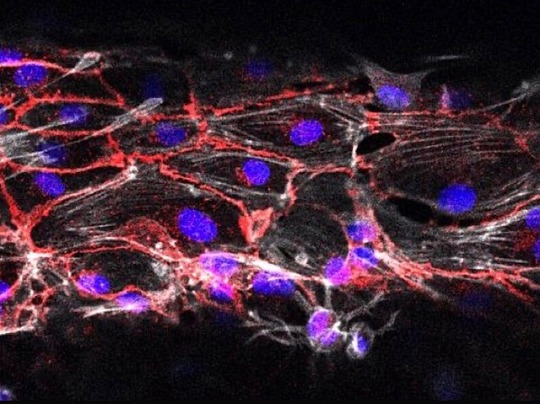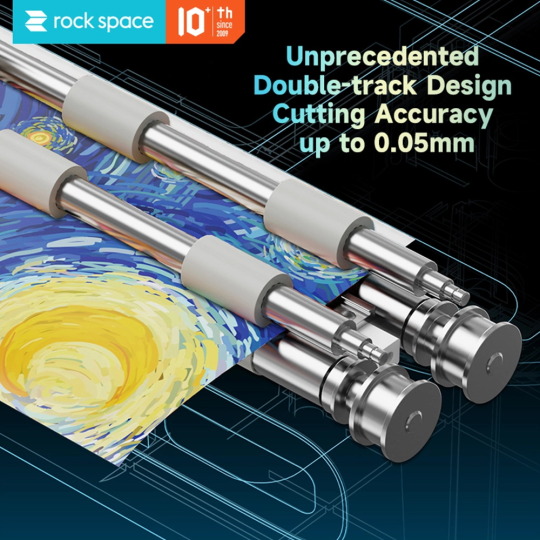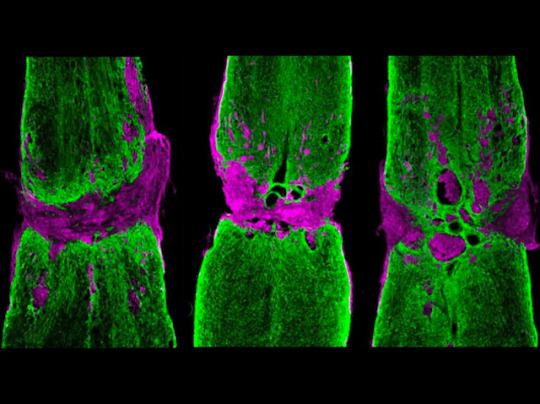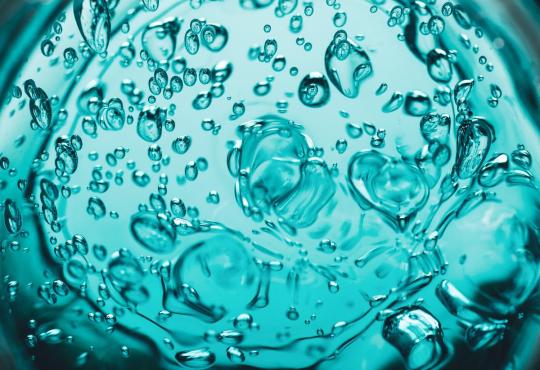#hydrogel
Text
Acting as the main interface between the internal and the external world, the skin is the largest and most important organ of the human body. It is frequently exposed to many types of physical injuries or wounds, including cuts, scrapes, scratches, infections, and ulcers.
Unfortunately, as one ages, the skin becomes more frail and less capable of healing itself without help. With many countries experiencing a rapid rise in the aging population, the demand for treating such skin wounds has created a greater need for accessible and effective wound care products.
Continue Reading.
208 notes
·
View notes
Text
Swimming Through Mud

At the bottom of ponds, nematodes and other creatures swim in a world of mud. They squirm their way through a sediment of dirt particles suspended in water. (Image credit: nematode - P. Garcelon, experiment - A. Biswas et al.; research credit: A. Biswas et al.)
Read the full article
77 notes
·
View notes
Text

3D printed electronic skin provides promise for human-machine interaction
With more than 1,000 nerve endings, human skin is the brain's largest sensory connection to the outside world, providing a wealth of feedback through touch, temperature and pressure. While these complex features make skin a vital organ, they also make it a challenge to replicate.
By utilizing nanoengineered hydrogels that exhibit tunable electronic and thermal biosensing capabilities, researchers at Texas A&M University have developed a 3D-printed electronic skin (E-skin) that can flex, stretch and sense like human skin.
"The ability to replicate the sense of touch and integrate it into various technologies opens up new possibilities for human-machine interaction and advanced sensory experiences," said Dr. Akhilesh Gaharwar, professor and director of research for the Department of Biomedical Engineering. "It can potentially revolutionize industries and improve the quality of life for individuals with disabilities."
Read more.
18 notes
·
View notes
Text

Magnetic Morphing
Using magnetic forces to remotely shape 3D printed hydrogel scaffolds with biomedical applications such as for growing endothelial cells in vessel networks (pictured)
Read the published research paper here
Image from work by Ruoxiao Xie and Yuanxiong Cao, and colleagues
Department of Materials, Department of Bioengineering and Institute of Biomedical Engineering, Imperial College London, London and Department of Physiology, Anatomy and Genetics, Kavli Institute for Nanoscience Discovery, University of Oxford, UK
Image originally published with a Creative Commons Attribution 4.0 International (CC BY 4.0)
Published in Science Advances, February 2024
You can also follow BPoD on Instagram, Twitter and Facebook
#science#biomedicine#immunofluorescence#biology#hydrogel#3d printing#endothelial cells#blood vessels#magnets#bioengineering
15 notes
·
View notes
Text
Legrand to acquire Dutch health-tech firm Enovation for more than €500 million

- By InnoNurse Staff -
French electrical equipment manufacturer Legrand has agreed to purchase Dutch health software company Enovation from private equity firm Main Capital Partners.
The sale of Enovation, which creates digital platforms for the healthcare sector, marks the largest exit for Main Capital Partners.
Read more at Bloomberg/BNN Bloomberg
///
Other recent news and insights
Innovative microscopy sheds light on Alzheimer’s metabolism (UC San Diego)
Researchers in mechanical engineering at HKU develop miniaturized electric generators using hydrogels for biomedical devices (The University of Hong Kong)
An advanced brain science tool that requires no coding skills (Helmholtz Association of German Research Centres/Medical Xpress)
#enovation#private equity#netherlands#digital health#medtech#health tech#imaging#medical imaging#microscopy#biotech#hydrogel#legrand#france#brain#neuroscience#no code#computing#health it#vr#virtual reality
0 notes
Text
Installation d’un verre trempé en quelques petite étapes
0 notes
Text
This ultrasound sticker senses changing stiffness of deep internal organs
New Post has been published on https://thedigitalinsider.com/this-ultrasound-sticker-senses-changing-stiffness-of-deep-internal-organs/
This ultrasound sticker senses changing stiffness of deep internal organs
MIT engineers have developed a small ultrasound sticker that can monitor the stiffness of organs deep inside the body. The sticker, about the size of a postage stamp, can be worn on the skin and is designed to pick up on signs of disease, such as liver and kidney failure and the progression of solid tumors.
Credit: Courtesy of the researchers
In an open-access study appearing today in Science Advances, the team reports that the sensor can send sound waves through the skin and into the body, where the waves reflect off internal organs and back out to the sticker. The pattern of the reflected waves can be read as a signature of organ rigidity, which the sticker can measure and track.
“When some organs undergo disease, they can stiffen over time,” says the senior author of the paper, Xuanhe Zhao, professor of mechanical engineering at MIT. “With this wearable sticker, we can continuously monitor changes in rigidity over long periods of time, which is crucially important for early diagnosis of internal organ failure.”
The team has demonstrated that the sticker can continuously monitor the stiffness of organs over 48 hours and detect subtle changes that could signal the progression of disease. In preliminary experiments, the researchers found that the sticky sensor can detect early signs of acute liver failure in rats.
The engineers are working to adapt the design for use in humans. They envision that the sticker could be used in intensive care units (ICUs), where the low-profile sensors could continuously monitor patients who are recovering from organ transplants.
“We imagine that, just after a liver or kidney transplant, we could adhere this sticker to a patient and observe how the rigidity of the organ changes over days,” lead author Hsiao-Chuan Liu says. “If there is any early diagnosis of acute liver failure, doctors can immediately take action instead of waiting until the condition becomes severe.” Liu was a visiting scientist at MIT at the time of the study and is currently an assistant professor at the University of Southern California.
The study’s MIT co-authors include Xiaoyu Chen and Chonghe Wang, along with collaborators at USC.
Sensing wobbles
Like our muscles, the tissues and organs in our body stiffen as we age. With certain diseases, stiffening organs can become more pronounced, signaling a potentially precipitous health decline. Clinicians currently have ways to measure the stiffness of organs such as the kidneys and liver using ultrasound elastography — a technique similar to ultrasound imaging, in which a technician manipulates a handheld probe or wand over the skin. The probe sends sound waves through the body, which cause internal organs to vibrate slightly and send waves out in return. The probe senses an organ’s induced vibrations, and the pattern of the vibrations can be translated into how wobbly or stiff the organ must be.
Ultrasound elastography is typically used in the ICU to monitor patients who have recently undergone an organ transplant. Technicians periodically check in on a patient shortly after surgery to quickly probe the new organ and look for signs of stiffening and potential acute failure or rejection.
“After organ transplantation, the first 72 hours is most crucial in the ICU,” says another senior author, Qifa Zhou, a professor at USC. “With traditional ultrasound, you need to hold a probe to the body. But you can’t do this continuously over the long term. Doctors might miss a crucial moment and realize too late that the organ is failing.”
The team realized that they might be able to provide a more continuous, wearable alternative. Their solution expands on an ultrasound sticker they previously developed to image deep tissues and organs.
“Our imaging sticker picked up on longitudinal waves, whereas this time we wanted to pick up shear waves, which will tell you the rigidity of the organ,” Zhao explains.
Existing ultrasound elastrography probes measure shear waves, or an organ’s vibration in response to sonic impulses. The faster a shear wave travels in the organ, the stiffer the organ is interpreted to be. (Think of the bounce-back of a water balloon compared to a soccer ball.)
The team looked to miniaturize ultrasound elastography to fit on a stamp-sized sticker. They also aimed to retain the same sensitivity of commercial hand-held probes, which typically incorporate about 128 piezoelectric transducers, each of which transforms an incoming electric field into outgoing sound waves.
“We used advanced fabrication techniques to cut small transducers from high-quality piezoelectric materials that allowed us to design miniaturized ultrasound stickers,” Zhou says.
The researchers precisely fabricated 128 miniature transducers that they incorporated onto a 25-millimeter-square chip. They lined the chip’s underside with an adhesive made from hydrogel — a sticky and stretchy material that is a mixture of water and polymer, which allows sound waves to travel into and out of the device almost without loss.
In preliminary experiments, the team tested the stiffness-sensing sticker in rats. They found that the stickers were able to take continuous measurements of liver stiffness over 48 hours. From the sticker’s collected data, the researchers observed clear and early signs of acute liver failure, which they later confirmed with tissue samples.
“Once liver goes into failure, the organ will increase in rigidity by multiple times,” Liu notes.
“You can go from a healthy liver as wobbly as a soft-boiled egg, to a diseased liver that is more like a hard-boiled egg,” Zhao adds. “And this sticker can pick up on those differences deep inside the body and provide an alert when organ failure occurs.”
The team is working with clinicians to adapt the sticker for use in patients recovering from organ transplants in the ICU. In that scenario, they don’t anticipate much change to the sticker’s current design, as it can be stuck to a patient’s skin, and any sound waves that it sends and receives can be delivered and collected by electronics that connect to the sticker, similar to electrodes and EKG machines in a doctor’s office.
“The real beauty of this system is that since it is now wearable, it would allow low-weight, conformable, and sustained monitoring over time,” says Shrike Zhang, an associate professor of medicine at Harvard Medical School and associate bioengineer at Brigham and Women’s Hospital, who was not involved with the study. “This would likely not only allow patients to suffer less while achieving prolonged, almost real-time monitoring of their disease progression, but also free trained hospital personnel to other important tasks.”
The researchers are also hoping to work the sticker into a more portable, self-enclosed version, where all its accompanying electronics and processing is miniaturized to fit into a slightly larger patch. Then, they envision that the sticker could be worn by patients at home, to continuously monitor conditions over longer periods, such as the progression of solid tumors, which are known to harden with severity.
“We believe this is a life-saving technology platform,” Zhao says. “In the future, we think that people can adhere a few stickers to their body to measure many vital signals, and image and track the health of major organs in the body.”
This work was supported, in part, by the National Institutes of Health.
#Bioengineering and biotechnology#change#continuous#data#Design#Disease#Diseases#electric field#electrodes#Electronics#engineering#engineers#Fabrication#Future#hand#Health#how#humans#hydrogel#Imaging#it#kidney#LESS#life#material#materials#Materials science and engineering#measure#measurements#Mechanical engineering
1 note
·
View note
Text
Honor 90 5G | Installing Clear/Gloss Hydrogel Screen Protector | rizkaCreations.com
.
.
.
#rizkaCreations #hydrogel #clear #screenprotector #installation #installing #installaitoninstruction #installationvideo #honor90 #honor905g #HONOR90
0 notes
Text
Fliegen in abbaubares Plastik verwandeln
Forscher der American Chemical Society haben auf einer Konferenz ihre Fortschritte bei der Nutzung von Insekten als Quelle für Chemikalien zur Herstellung von abbaubaren Kunststoffen vorgestellt. Das Team entwickelt seit 20 Jahren Methoden, um Naturprodukte, wie Zuckerrohr oder Holz, in biologisch abbaubare Polymere umzuwandeln. Da diese Naturprodukte aber für Lebensmittel, Treibstoff und andere…

View On WordPress
#American Chemical Society#Chitin#Chitosan#Fettsäuren#Hydrogel#Kreislaufwirtschaft#Lipide#Polycarbonate#Polymer#Polyurethane#Zuckerrohr
0 notes
Text
ZC3 Smart Plotter
#screen #protector #cutter #machine
Reduce inventory
Attract customer
Cut protective films for mobile phones, watches, electronic cigarettes, etc.
Automatic feeding, larger cutting area.
Cloud-based data management system.
Suitable for small and medium-sized mobile phone stores, maintenance stores and other stores in different industries.
ZC3 Smart Screen Protector Cutter Specification
Model:
ZC3
Maximum feeding width:
206mm
Maximum cutting width:
195mm
Data transmission method:
WiFi
Cutting accuracy:
0.05mm
Cutting pressure:
1400g
Input voltage:
110V-240V
Power:
≤40W
Dimension:
413x205x128(LxWxH)
Net weight:
5.5kg
Details Of ZC3 Smart Screen Protector Cutter
WiFi connection
Exclusive double-track design, cutting accuracy up to 0.05mm
Built-in touch screen, easy & convenient operation
Detachable touch screen
Automatic film feeding
Automatic identification of film code
Accessible data
Cutting size: S,M
Support devices: Phone, Watch, Earphone, Game console, Lens, E-cigarette

0 notes
Text
Scientists at UNSW Sydney have created a new material that could change the way human tissue can be grown in the lab and used in medical procedures.
The new material belongs to a family of substances called hydrogels, the essence of life's "squishy" substances found in all living things, such as cartilage in animals and in plants like seaweed. The properties of hydrogels make them very useful in biomedical research because they can mimic human tissue, allowing cells to grow in a laboratory.
There are also human-made hydrogels that are used in a broad range of commodity products ranging from food and cosmetics to contact lenses and absorbent materials, and more recently in medical research to seal wounds and replace damaged tissue.
While they might function adequately as space fillers that encourage tissue growth, synthetic hydrogels fall short in recreating the complex properties of real human tissue.
But in a research paper published in Nature Communications, scientists from UNSW describe how a new lab-made hydrogel behaves like natural tissue, with a number of surprising qualities that have implications for medical, food and manufacturing technology.
Continue Reading
93 notes
·
View notes
Text
https://www.transitieweb.nl/transhumanisme/dr-ana-mihalcea-hydrogel-verandert-de-mens-in-een-cyborg/
Hydrogel changes people to cyborgs.
0 notes
Text

Researchers use liquid metal and laser ablation to create stretchable miniature antennas
Researchers have developed a new method for making tiny stretchable antennas from a hydrogel and liquid metal. The antennas could be used in wearable and flexible wireless electronic devices to provide a link between the device and external systems for power delivery, data processing and communication.
"Using our new fabrication approach, we demonstrated that the length of a liquid metal antenna can be cut in half," said Tao Chen from Xi'an Jiaotong University in China. "This may help downsize wearable devices used for health monitoring, human activity monitoring, wearable computing and other applications, making them more compact and comfortable."
In the journal Optics Express, the researchers describe their new technique, which involves injecting eutectic gallium-indium—a metal alloy that is a liquid at room temperature—into a microchannel created with a single-step femtosecond-laser ablation process. They used this method to create an antenna measuring 24 mm × 0.6 mm × 0.2 mm embedded into a 70 mm × 12 mm× 7 mm hydrogel slab.
Read more.
#Materials Science#Science#Hydrogel#Liquid metals#Electronics#Materials synthesis#Gallium#Indium#Lasers#Flexible electronics
13 notes
·
View notes
Photo

Barrier Breakthrough
Your body contains hundreds of nerves but they can't all regenerate. After injury, peripheral nerves replace damaged sections but nerves in your central nervous system (CNS) can’t. Instead, brain cells called astrocytes cordon off damaged tissue (lesions) to help preserve healthy nerve tissue. These lesions form a barrier, preventing regeneration. Transplants of neural progenitor cells (NPCs), made from stem cells, may help. Researchers investigate by tagging NPCs and transplanting them, via a hydrogel, into uninjured or injured mouse CNS. RNA analysis revealed NPCs in uninjured mice matured into cells resembling healthy astrocytes, while NPCs in injured mice matured into cells resembling ‘reactive’ astrocytes, which arise after injury to partition off lesions. Fluorescence microscopy of injured CNS (pictured) revealed that adding NPCs (right) reduced lesion size (magenta) and helped bridge lesions via astrocytes (green) compared with injured CNS without NPCs (left) or only hydrogel (middle). The injury microenvironment, therefore, directs NPCs towards wound repair.
Written by Lux Fatimathas
Image from work by T. M. O’Shea and colleagues
Department of Neurobiology, David Geffen School of Medicine, University of California, Los Angeles, CA, USA
Image originally published with a Creative Commons Attribution 4.0 International (CC BY 4.0)
Published in Nature Communications, September 2022
You can also follow BPoD on Instagram, Twitter and Facebook
#science#biomedicine#immunofluorescence#neuroscience#nerves#central nervous system#peripheral nerves#rna-seq#astrocytes#hydrogel#neural progenitor cells#stem cells
29 notes
·
View notes
Link
Agriculture is the backbone of any developing country as they contribute a significant role to economical growth, along with achieving other essential development goals like ensuring food security and improving nutrition. It not only provides food security but also raises income among the people who live in rural areas and work mainly in farming.
Agriculture hydrogel | Alsta Hydrogel

Based on soil condition and climate, irrigation practices have changed with changes in farming technology, but still, there are maximum places that use age-old practices which not only reduce the effective use of water but also decrease the availability of crops. Due to irresponsible farming practices, infestations, and climate change, soil, water, and biodiversity are at risk.
With the fast decline of irrigation and continued expansion of population and economic activity in most states, which are located especially in the arid and semi-arid regions of the world are facing problems of uncertain and inadequate rainfall.
Water scarcity, Insufficient rainfall, and excessive irrigation lead to drought, financial loss, and other undesirable leads to lower productivity of crops, which increases the price rate.
Nowadays, water conservation is possible with the application of hydrogel polymer in agricultural fields. This formulation helps to solve the water-related problem, and also upgrades the soil texture. This polymer can be mixed with soil particles and swells up in contact with water. It starts releasing water when the conditions become dry, ensuring an uninterrupted water supply and normal growth. It acts as a water reservoir for plants and has the ability to trap irrigation and rainwater which can be released later at the time of requirement over prolonged durations.
Agriculture Hydrogel, a water-absorbing polymer is a polyacrylate-based super absorbent polymer for use as a water-retaining agent in drought-prone areas. These are Non-toxic, bio-degradable with no residues around, and operational life of over five years. This polymer has a super absorbent capacity and swells quickly to a larger degree. It absorbs aqueous solutions and soluble plant nutrients with the help of hydrogen bonds of water molecules. It absorbs water up to 400 - 500 times its own weight and releases water during the dry condition, influencing soil permeability, texture, and evaporation rate.
Chemtex manufactures hydrogel as the brand name of ALSTA HYDROGEL, enhancing water retaining ability. In addition to water, it will swell up and hold the water molecules for the future making the whole process cost-effective.
Advantages of using ALSTA HYDROGEL
· It is effectively useful in areas prone to drought.
· Ability to absorb a huge amount of water
· Compatible with all types of soil
· Decreases the use of fertilizers and pesticides
· Long lifetime operation in soil
· Non-Toxic, Biodegradable
· Long shelf and operational life
0 notes
Text
Hydrogels: A Promising Future for Pharmaceutical Dosing and Drug Delivery Systems
Hydrogels: A Promising Future for Pharmaceutical Dosing and Drug Delivery Systems. #hydrogels #hydrogel #pharmaceuticalformulations #dosesform
Hydrogels: Pharmaceutical dosing and drug delivery systems have been evolving over the years to improve patient outcomes, enhance drug efficacy, and minimize side effects. One of the most promising materials that have emerged in this field is hydrogels. These unique materials possess the ability to absorb and retain water, and their versatile nature makes them suitable for various applications.…

View On WordPress
0 notes